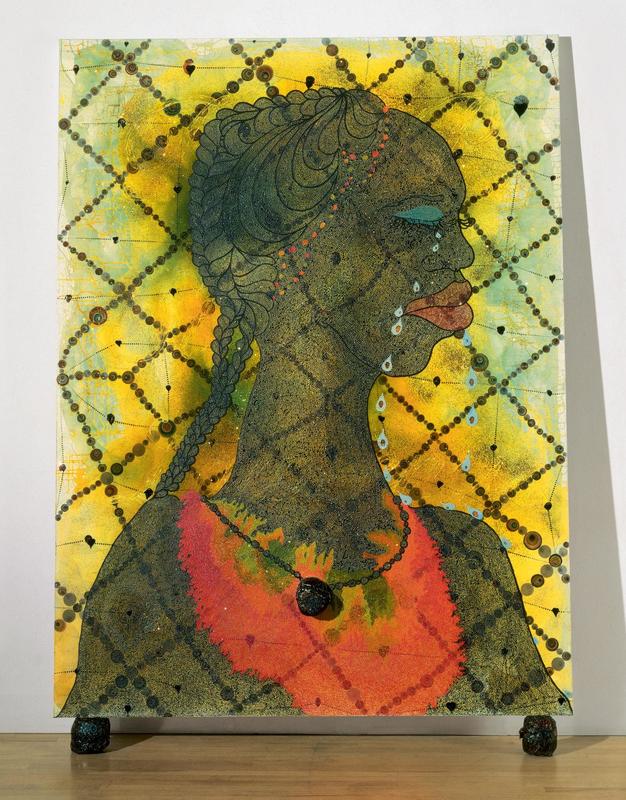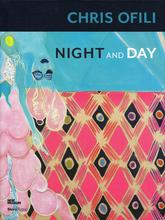This painting by Young Bristish Artist member Chris Ofili is as layered on the canvas as it is in its themes and messages.
For starters, No Woman No Cry incorporates oil and acrylic paint, graphite, polyester resin, printed paper, glitter, map pins, and elephant dung. Stop rubbing your eyes, you read that right. And you don’t wanna get pink eye. It’s part of that YBA swag, which was all about being provocative.
Ofili uses these varied substances and tools to paint a picture rich in its diversity, and style. There are more traditional aspects, and then there’s a“found art” approach that grounds the image in a real world setting that makes it feel raw and accessible to the viewer.
On the other hand, it’s what the painting is referencing in its central image that really puts it in a multidimensional space that will impress you and make you cry a little at the same time. No Woman No Cry is dedicated to the strength and perseverance of Doreen Lawrence, the mother of the late Stephen Lawrence, an 18 year old who was the victim of a homicidal hate crime in London back in 1993 that changed the way that the UK looked at itself. The lack of a decent and formal response from the police led many to open up a dialogue on the institutional racism within the police department. In fact, it was this case that coined that term and is largely responsible for making it a staple in social justice reform today.
A dope layer to the narrative thread in this painting is the title, which is of course a reference to the popular Bob Marley song of the same name. In the uplifting song, Marley speaks to an unknown woman reassuring her that things will be okay, and she doesn’t need to cry. The repetition of the lines “No woman, no cry”, and “Everything is gonna be alright” will cheer anyone up on a bad day, and it’s a beautiful dedication to the women of the world, who always deserve more love and respect for the hardships they endure. The connections this song has to the painting don’t stop there. Ofili isn’t Jamaican himself, but he grew up during a time when the songs of Bob Marley were showing the world love as it stared down the barrel of a gun. The world’s injustices seen through the prism of Marley’s idealism no doubt inspired a generation. Doreen Lawrence is from Jamaica herself, like Marley. So in naming this painting after his famous song, it places Doreen into the place of that unnamed woman, making it-- at least in relation to this painting-- about her. It’s a beautiful sentiment.
In a piece for the Huffington Post, journalist Jon Snow (not that one), named No Woman, No Cry as one of his favorite pieces from Tate’s collection. And he mentions that though the painting depicts Doreen crying, that those are tears of “defiance and stoicism,” not of sorrow.
You look at a painting like this, and with how many layers of craft and emotion are on display, you can’t help but think of that sentiment that art imitates life. I for one kept coming back to that as I researched and wrote this piece, but then in one of my many bouts of procrastinating by scrolling through Instagram, I came across a Mos Def quote from 2000 that proposes that “Art doesn’t imitate life. Art is the expression of life.” After I picked my jaw up off the floor, it put this painting and its entire existence in a new light for me, elephant dung and all.




















I like this piece. The addition of the weight of the song gives even more power to this piece.